Hey friends,
Why did I wait so long??? I really wonder! Today’s recipe is such an obvious choice, it was seriously missing from the blog.
So here are pickled red onions and vegetables!
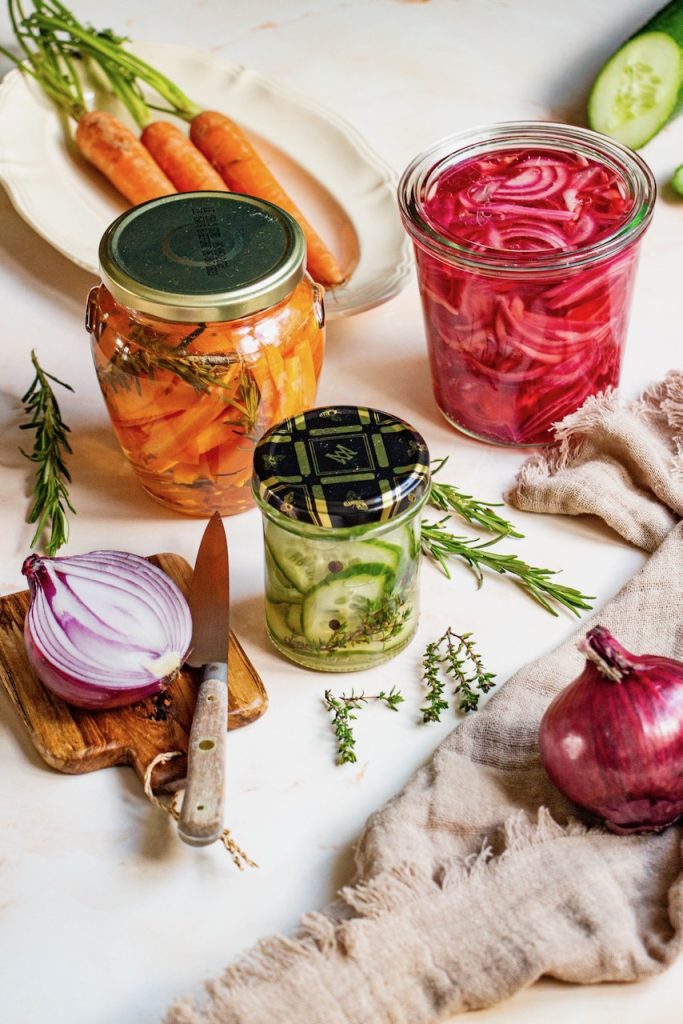
What are pickles? They are a condiment made with vegetables, sugar, water, and white vinegar. Nothing more… I used white balsamic vinegar, which has a very mild taste. But you can use any other white vinegar suitable for consumption. The process for making pickles is simply fermentation.

Well, when I say “nothing more,” it actually depends on your preferences. I added cumin seeds and rosemary to my carrot pickles, and thyme and Timur berries to my cucumber pickles. Essentially, you can flavor your pickles (or not, it’s optional!).
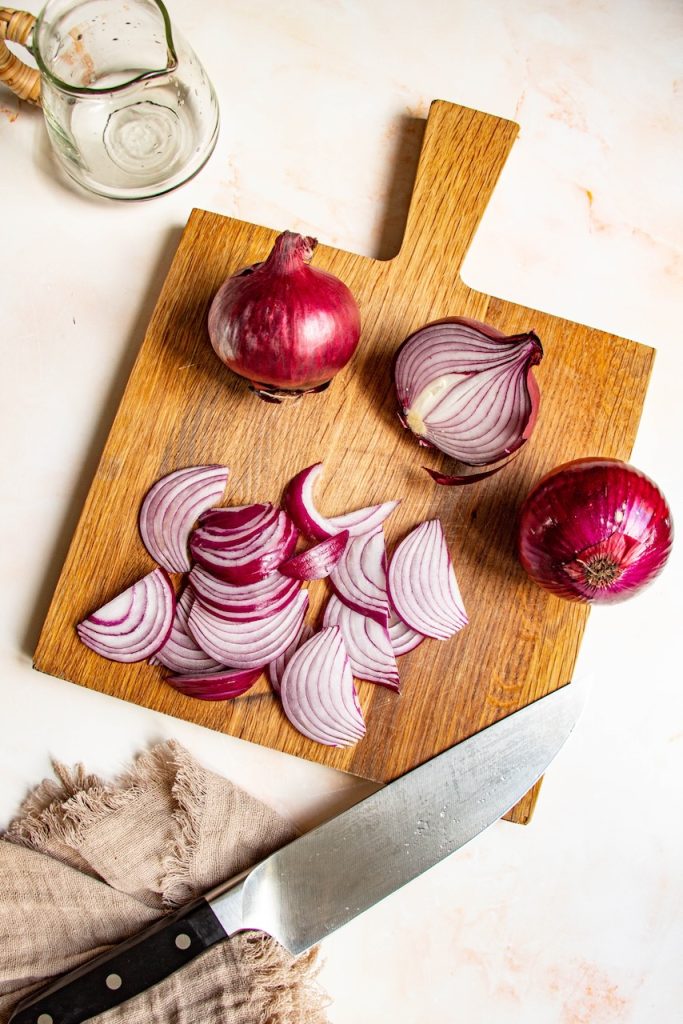
These condiments will bring crunch, color, brightness to your dishes, and most importantly, a burst of flavor when you taste them: acidity, a hint of sweetness, and the aromas from your personal additions… And the best part? They take only 10 minutes to prepare!
I bet that once you try them, you’ll want to make them all the time. You can literally use them “in all kinds of dishes!”
Try them with my ham and pickle pizza sandwich, my chicken and vegetable sandwich, or my cured ham pizza sandwich.
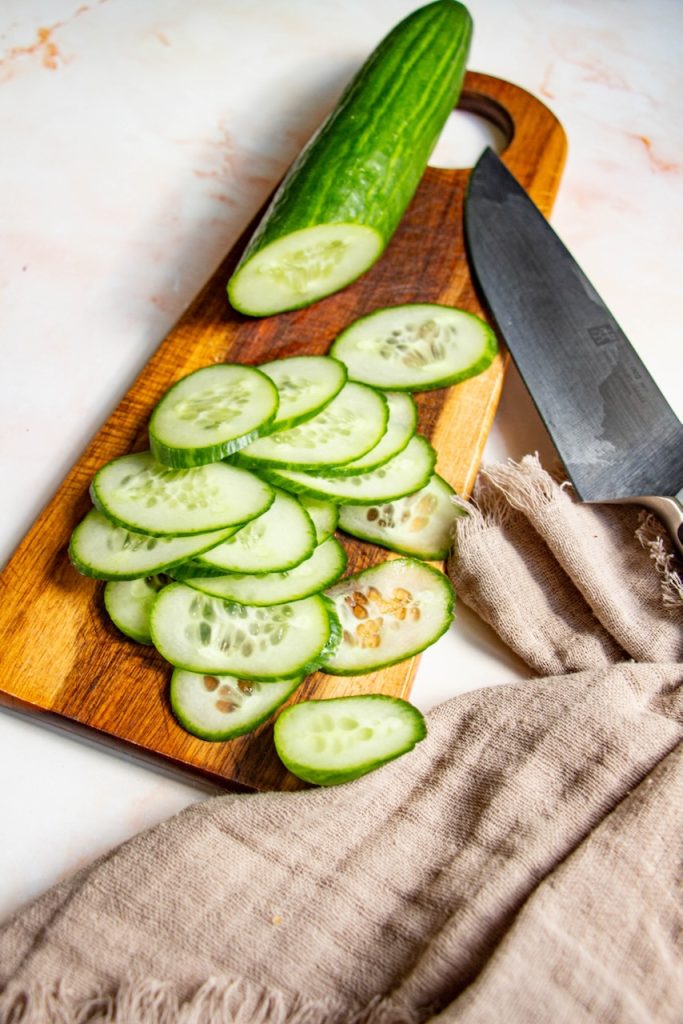
Let’s start with appetizers: you can serve them as crunchy snacks, as a topping for a good za’atar labneh, or with homemade hummus.
For starters: serve them with a slice of country pâté, and your dish will be instantly elevated!
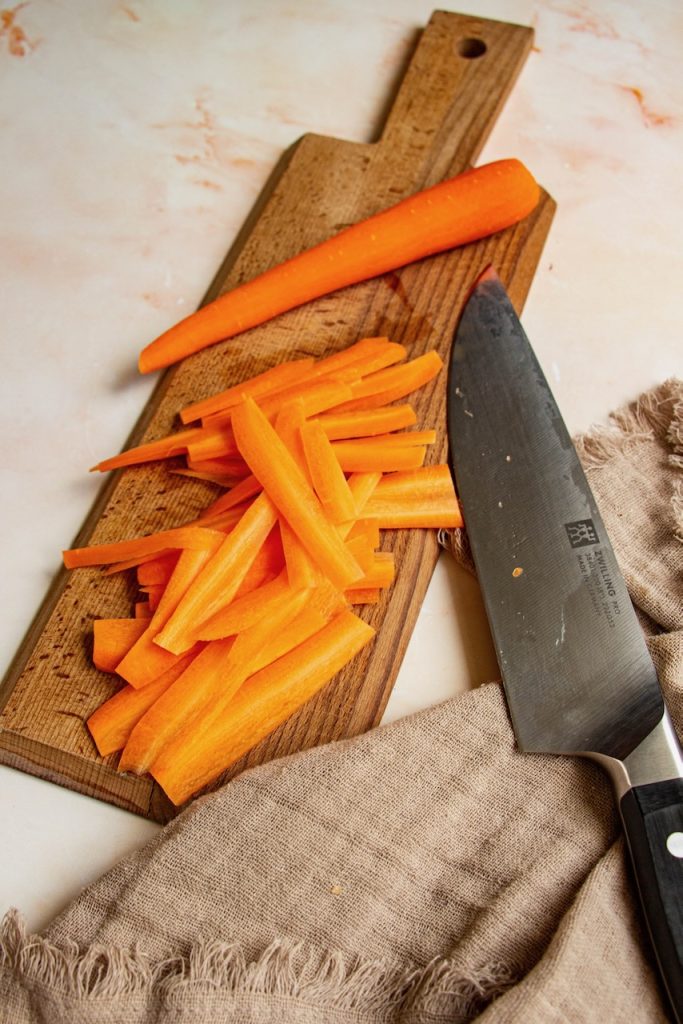
And of course, as the perfect finishing touch for various dishes or sandwiches: in wraps, on toasts, in burgers, with curries, lentil dahls, grilled meats or fish, and naturally, in salads or poke bowls.
Basically, as you can see, pickled vegetables will add that extra special touch to many meals.
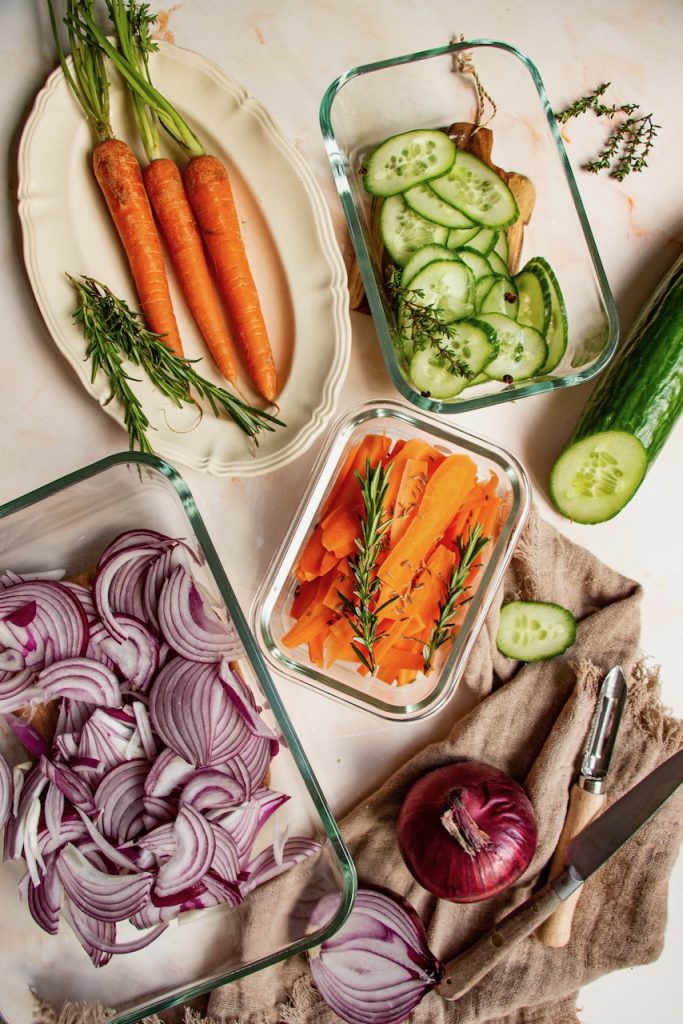
On top of all that, pickles offer several health benefits.
Pickles have a nutritional richness enhanced by fermentation. The microorganisms involved in fermentation produce many protective compounds, including vitamins (B2, B9, B12, K, B1), antioxidants (flavonoids, phenols, and sterols), as well as amino acids that also modify the flavor and texture of foods. Fermentation also improves the digestibility of fibers, especially in root vegetables and tubers.

Pickles are also very beneficial for gut health. Lactobacillus are the most studied probiotics due to their role in digestion and microbiome health. The probiotic levels found in pickles match the recommended therapeutic doses. Regular consumption of pickles helps to populate the microbiome with beneficial probiotic strains. (source: lanutrition.fr)
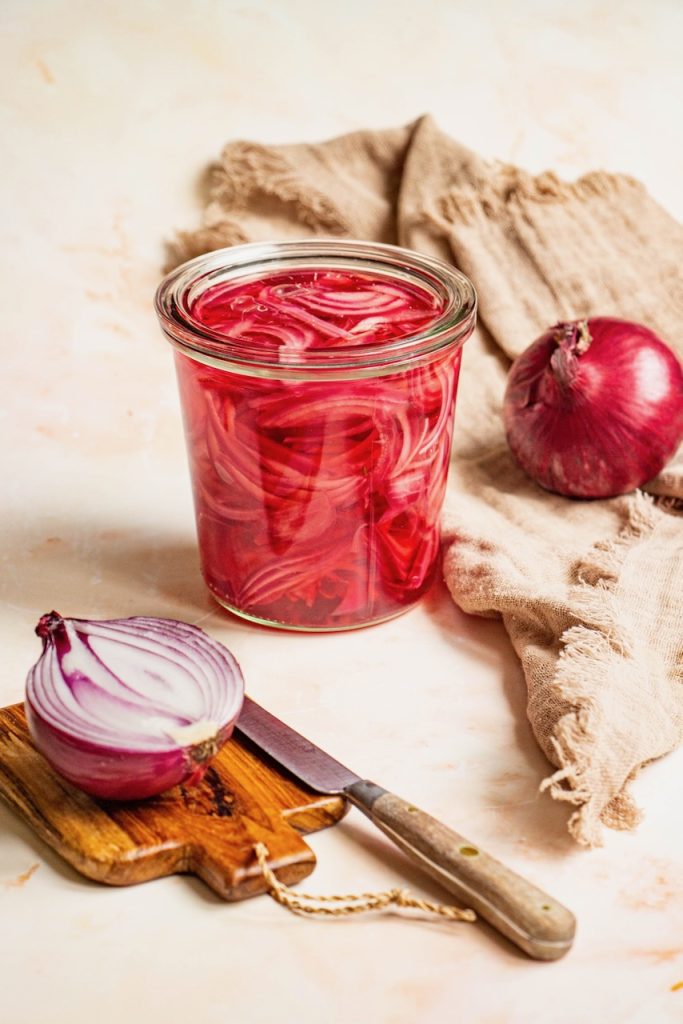
So, which vegetables should you use for pickles? Here, I used red onion, baby carrots, and cucumber. But that’s far from an exhaustive list!
You can also use turnips, beets, small Lebanese cucumbers, bell peppers, cauliflower, zucchini, radishes, fennel, cabbage, or even broccoli.
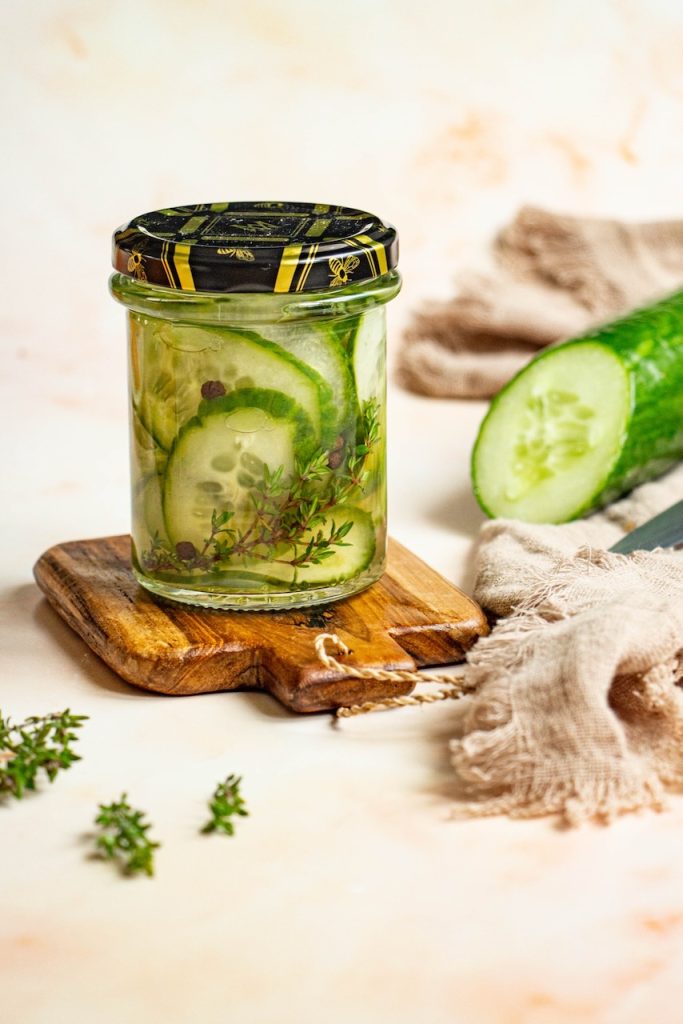
As I mentioned earlier, you can flavor your pickles with peppercorns, garlic, chives, fresh coriander, cumin, ginger, parsley, paprika, bay leaves, and more! Feel free to share your own pickle versions in the comments.
For storage, you can keep them for several months if you place your pickles in sterilized jam jars (like you would for jam). Otherwise, they will keep well in the refrigerator for 4 to 5 weeks. Be aware that their flavor may intensify over time.
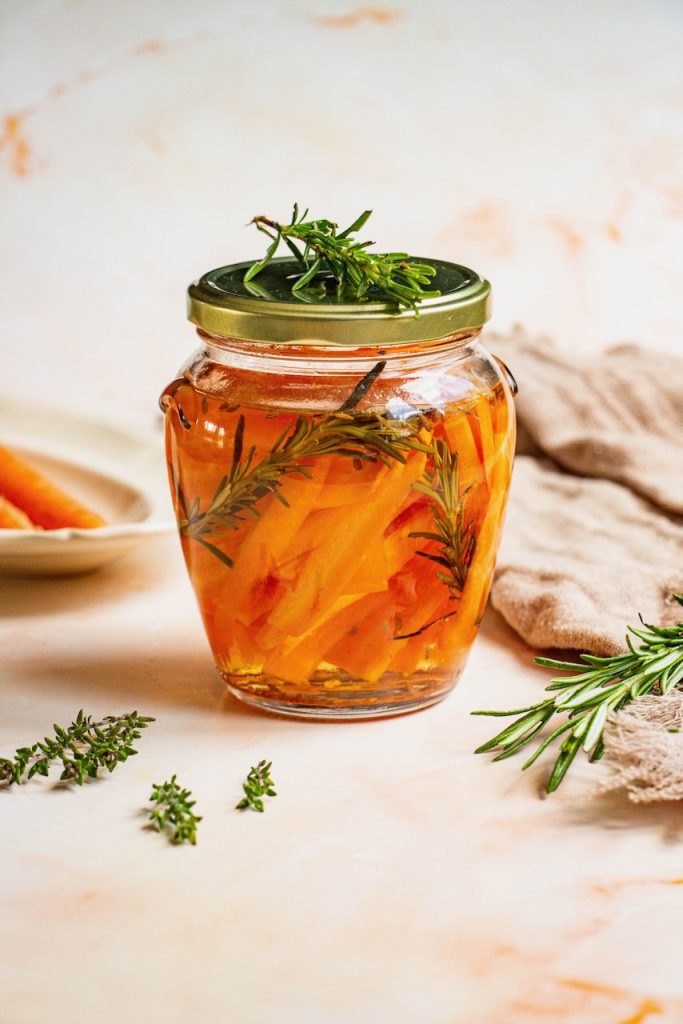
The necessary utensils:
A cutting board,
A good paring knife,
A saucepan,
And some jars.
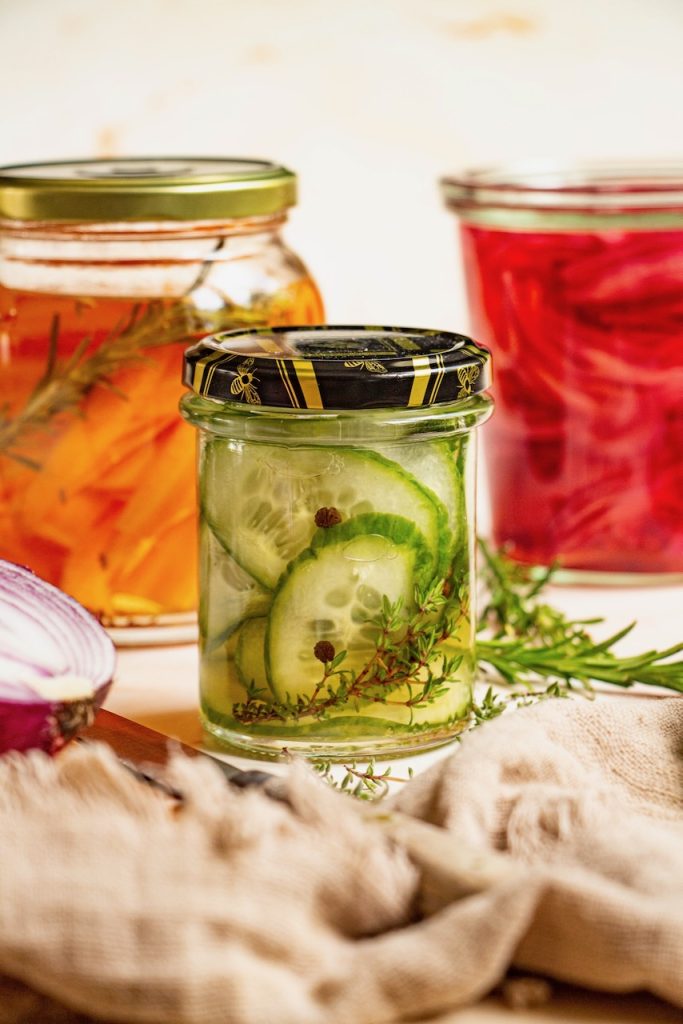
Well, I’ve talked a lot—now it’s time to put on your apron and make some pickled vegetables!
The recipe, Chef!
Red Onion and Vegetable Pickles
Ingredients
- 2 red onions (or vegetables)
- 100 g sugar (1/2 cup)
- 230 ml white vinegar (1 cup)
- 345 ml water (1 cup 1/2)
Instructions
Peel and cut the onions in thin slices. Set aside in a jar.
Heat the sugar, vinegar and water up to a boil.
Pour on the onion slices. Close the jar with a lid and let cool down.
Keep in your fridge for 4 to 5 weeks.
Wait 3-4 hours before eating.

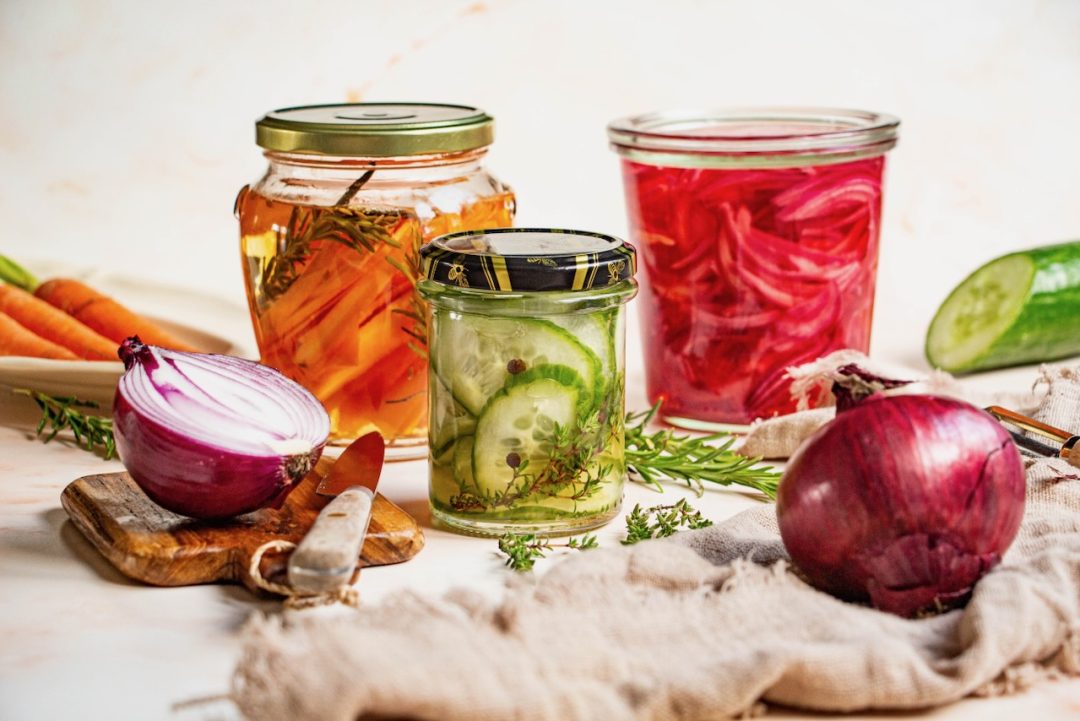
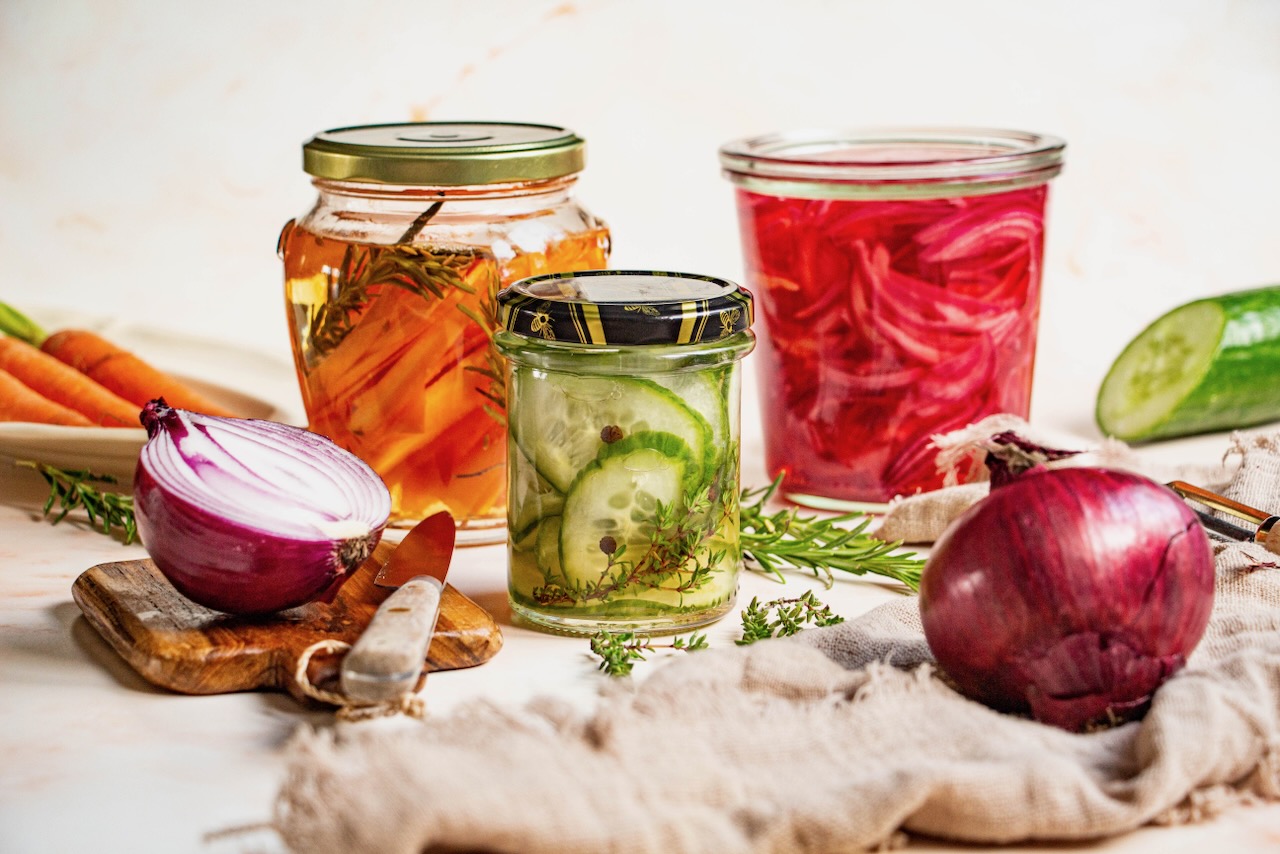

 ( Vote !)
( Vote !)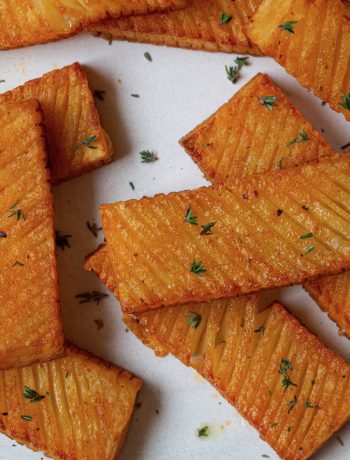
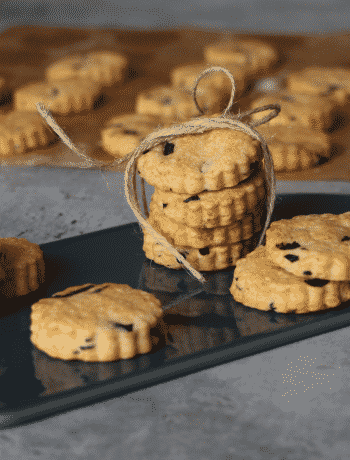
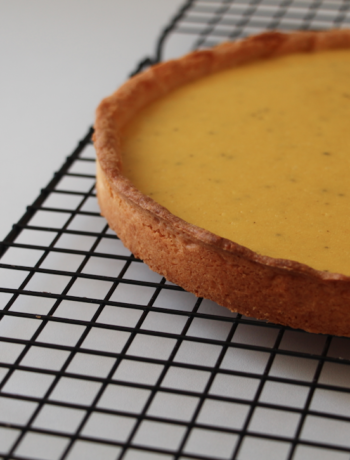
No Comments